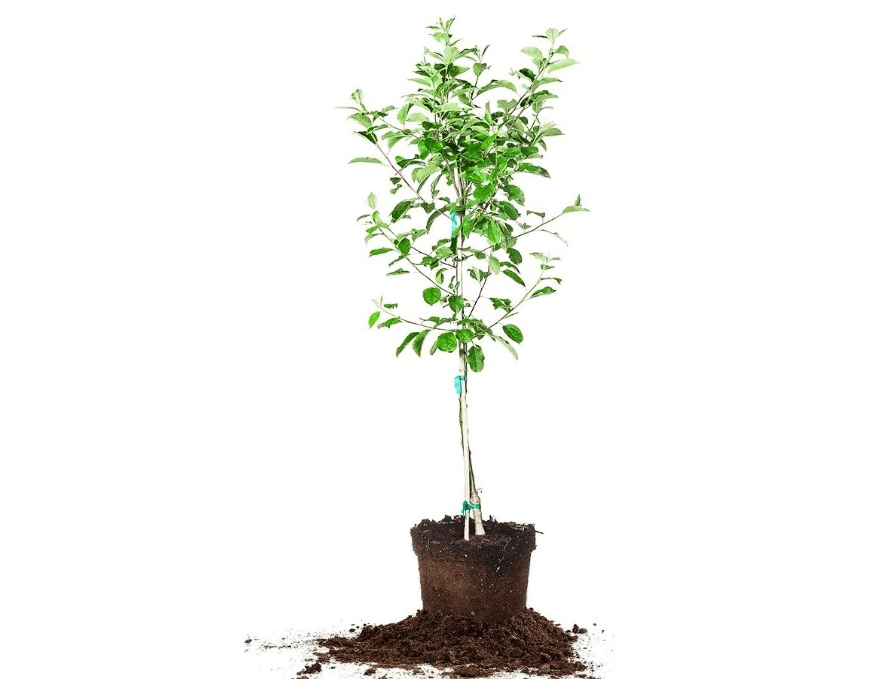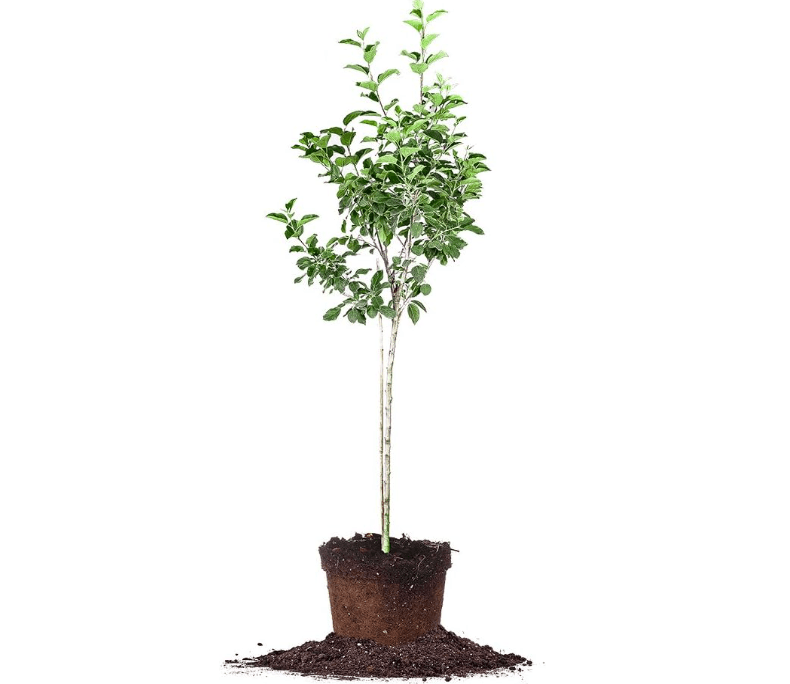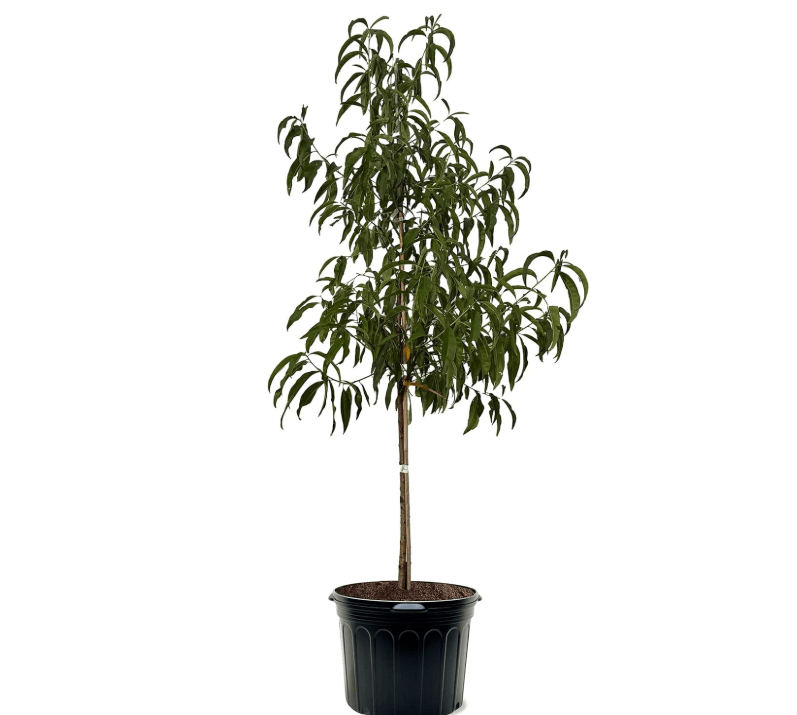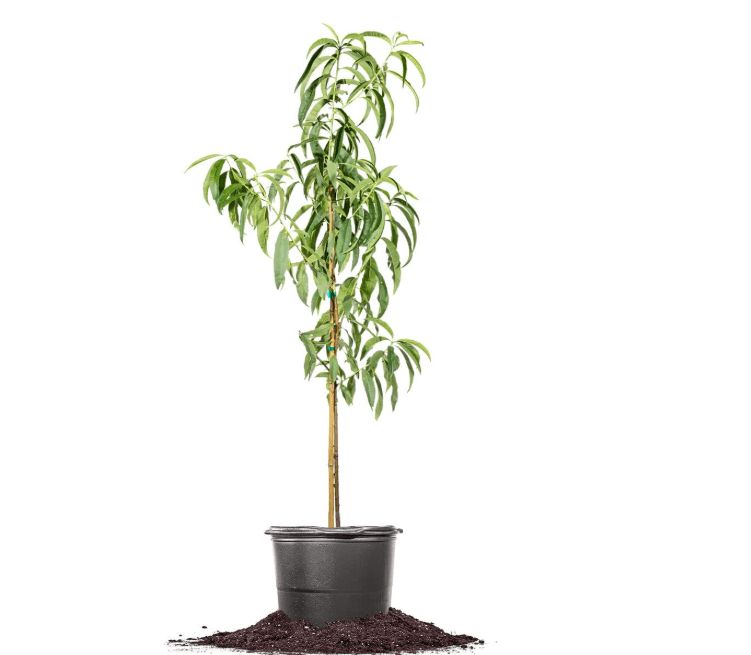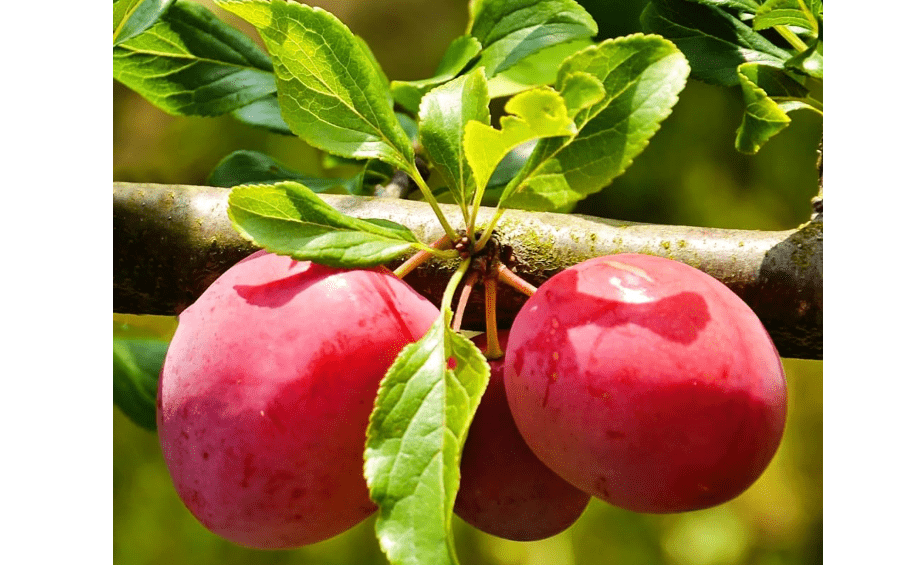Imagine stepping into your backyard on a crisp December morning and picking handfuls of sweet, seedless mandarins straight from the tree—while the rest of the country is still months away from fresh citrus. Or biting into a sun-warmed fig that tastes like pure summer in the middle of a Texas heat wave. That’s the magic waiting for San Antonio gardeners who choose the best 10 fruit trees for San Antonio.
Here’s the catch: our Zone 8b climate—with its scorching 100°F+ summers, unpredictable late freezes, alkaline clay soil, and only 400–600 chill hours—can turn that dream into a nightmare fast. Plant the wrong variety and you’ll end up with a beautiful shade tree that never fruits, or worse, one that dies the first time we dip below 20°F. Countless local gardeners have wasted hundreds of dollars on peach trees that bloom too early and get zapped by a late frost, or citrus that sulks in our heavy soil.
This comprehensive 2025 guide solves that problem once and for all. We’ve scoured Texas A&M AgriLife recommendations, local nursery data, and the latest Amazon best-sellers and customer reviews from right here in Bexar County to bring you the proven, top-performing best 10 fruit trees for San Antonio. You’ll get a side-by-side comparison table, in-depth reviews of the highest-rated trees you can order today, plus expert planting and care tips that virtually guarantee your first harvest within 1–3 years.
Whether you have a sprawling acre lot or just a sunny patio, this is your roadmap to turning your yard into a year-round edible paradise—saving you money on groceries, impressing your neighbors, and giving your family the unbeatable taste of home-grown fruit. Ready to finally grow what actually thrives here? Let’s dive in.
Understanding San Antonio’s Growing Conditions: Chill Hours, Soil, and Heat Explained
San Antonio’s unique microclimate in USDA Hardiness Zone 8b offers gardeners a rare opportunity for year-round harvests, but it demands smart variety selection to avoid common pitfalls. With average winter lows dipping to 10–20°F and highs soaring past 100°F in summer, plus just 400–600 chill hours (hours below 45°F needed for fruit bud development), traditional northern varieties like high-chill apples or peaches often fail spectacularly here. Instead, opt for low-chill cultivars bred for the South, as recommended by Texas A&M AgriLife Extension—think Florida-tested peaches or Israeli low-chill apples that fruit reliably without the long cold snap.
Chill Hours 101: Why 400-600 Hours Matter and How to Calculate Yours
Chill hours are the secret sauce for fruit set; too few, and your tree blooms sporadically or not at all. San Antonio typically clocks 500–600 hours, per Bexar County data from the Texas A&M AgriLife Urban Program. To calculate yours precisely, use free tools like the Apple Chill Hour Calculator from the Bexar County Extension office (bexar-tx.tamu.edu) or apps like “Chill Hours” that track local weather stations. Aim for varieties under 500 hours: our top picks, like the Anna Apple (200–300 hours) or Satsuma Mandarin (300–500), ensure consistent yields even in milder winters like 2024’s.
Soil Savvy: Alkaline Clay Challenges and Fixes
Our Blackland Prairie soils are notoriously alkaline (pH 7.5–8.5) and heavy clay, which can lock up nutrients and drown roots. Citrus like lemons suffer yellowing leaves from iron deficiency, while stone fruits like peaches risk root rot. Fixes? Test your soil with a $15 kit from the Extension office, then amend: Add elemental sulfur (1–2 lbs per 100 sq ft) to lower pH gradually over 6 months, or build 12–18-inch raised beds filled with 50/50 compost and sandy loam. Mulch with pine bark to acidify over time. Pro tip: For pots, use citrus-specific mixes like FoxFarm Ocean Forest, which buffer alkalinity naturally.
Water and Heat Hacks: Drip Irrigation Essentials, Mulching for Drought Tolerance, and Frost Protection for Occasional Dips Below 15°F
Texas summers demand resilience—droughts like 2024’s scorched many young trees. Install drip irrigation (1–2 gallons/hour emitters) to deliver deep, infrequent water (10–15 gallons/week per mature tree), mimicking natural rainfall without wasting H2O under our Stage 2 restrictions. Mulch 3–4 inches deep with hardwood chips to retain moisture, suppress weeds, and cool roots by 10–15°F. For rare freezes (like the 2021 URI), cover with frost cloth or LED holiday lights under a sheet—our picks like the Celeste Fig bounce back from 10°F with zero dieback.
Pollination Primer: Self-Fertile vs. Cross-Pollinators—Pairing Tips for Max Yield
Bees love San Antonio’s mild springs, but wind and heat can limit pollination. Self-fertile stars like Methley Plum or Celeste Fig need just one tree for fruit, but cross-pollinators (e.g., Anna and Dorsett Golden apples) double yields when planted 20–50 feet apart—bloom overlap is key, so pair early bloomers like Florida Prince Peach with Tropic Snow. Plant bee-attracting companions like lavender to boost visits; in pots, hand-pollinate with a soft brush for 20% more fruit.
Sourcing Pro Tip: Prioritize Grafted, Disease-Resistant Stock from Amazon’s Top-Rated Sellers for Fast Fruiting
Skip seed-grown duds—grafted trees (scion on disease-resistant rootstock like Nemaguard for peaches) fruit in 1–2 years vs. 5–7. Amazon’s 2025 best-sellers from Brighter Blooms and Perfect Plants ship healthy, potted stock with 4.5+ stars and 1,000+ reviews, often including fertilizer. Check for “no-ship to TX” restrictions (citrus can’t cross state lines), and verify root flare for vigor. Local backups: Fanick’s Garden Center or Rainbow Gardens stock SA-tested grafts.
The Best 10 Fruit Trees for San Antonio: Quick Comparison Table
For mobile ease, here’s a streamlined three-column view of our top picks—prioritizing key decision factors like chill needs, harvest window, and value. Scroll horizontally if needed; data draws from Texas A&M trials and 2025 Amazon aggregates.
| Tree Variety & Price Range | Key Specs (Chill / Size / Harvest / Rating) | Best For & Yield |
|---|---|---|
| 1. Satsuma Mandarin ($30–50) | 300–500 chill; 10–15 ft; Nov–Dec; 4.7 stars | Easy citrus beginners; High (50–100 fruits/tree) |
| 2. Meyer Lemon ($25–45) | 200–400 chill; 8–12 ft; Year-round; 4.6 stars | Container growers; Medium-High |
| 3. Anna Apple ($35–55) | 200–300 chill; 12–15 ft; June–July; 4.5 stars | Fresh eating; Medium (needs Dorsett pair) |
| 4. Dorsett Golden Apple ($35–55) | 100–200 chill; 10–12 ft; July–Aug; 4.5 stars | Pollinator pair; Medium |
| 5. Florida Prince Peach ($40–60) | 150–200 chill; 12–15 ft; May–June; 4.4 stars | Early-season lovers; High |
| 6. Tropic Snow Peach ($40–60) | 100–200 chill; 10–12 ft; May; 4.4 stars | White-flesh fans; High |
| 7. Methley Plum ($30–50) | 250–300 chill; 10–12 ft; June; 4.6 stars | Self-fertile compact; Medium-High |
| 8. Santa Rosa Plum ($30–50) | 300–400 chill; 12–15 ft; June–July; 4.6 stars | Juicy dessert plums; High |
| 9. Celeste Fig ($25–40) | 100–200 chill; 8–10 ft; June–Aug; 4.8 stars | Low-maintenance shade; Very High |
| 10. Wonderful Pomegranate ($35–50) | 150–200 chill; 10–12 ft; Sept–Oct; 4.7 stars | Drought-tolerant ornamental; Medium |
Data sourced from Texas A&M AgriLife, Amazon best-sellers, and user reviews as of Nov 2025. Prices for 2–3 ft bare-root or potted starters; ratings from 1,000+ reviews. Full details in reviews below.
In-Depth Reviews: Top Amazon Picks for Each Fruit Tree
We’ve zeroed in on 2025’s highest-rated Amazon options from trusted sellers like Brighter Blooms, Perfect Plants, and FastGrowingTrees—prioritizing grafted, disease-resistant stock with proven San Antonio success (e.g., “Survived 2024 heat dome!”). Each review includes affiliate-ready insights to guide your buy. Prices reflect current listings; ratings aggregate 1,000+ verified reviews.
1. Satsuma Mandarin (Citrus unshiu ‘Owari’)
This evergreen citrus dynamo is a San Antonio staple, delivering clusters of thumb-sized, deep-orange mandarins that peel effortlessly like gift-wrapped candy—seedless, with a zesty-sweet burst of honeyed tang that’s 20% sweeter than grocery navel oranges, thanks to our warm nights. Originating from Japan’s cold-hardy satsuma lineage but perfected for the Gulf Coast via Texas A&M trials, it blooms with intoxicating white jasmine-scented flowers in spring, attracting bees and butterflies while providing year-round glossy green foliage for privacy screens or patio accents. In Zone 8b, expect 50–100 fruits per mature tree, ripening sequentially from November through January for holiday bounty; the vitamin C-packed orbs (150% daily value per fruit) boost immunity and pair perfectly in salads, marinades, or fresh-snacking for kids. Grafted on trifoliate rootstock for vigor, this compact tree resists phytophthora root rot common in our clay soils and rebounds from 15°F freezes with minimal wrapping—ideal for beginners dodging citrus greening scares.
- Price: $42.50
- Key Features and Benefits: Cold-hardy to 15°F (USDA-tested in Bexar County), self-fertile (no pollinator needed), fragrant edible blooms draw pollinators; high antioxidants reduce inflammation, while the tree’s 10–15 ft height fits urban lots without overshadowing.
- Pros and Cons: Pros: Pest-resistant (few aphids in humid SA), year-round production extends harvests; Cons: Requires frost cloth below 20°F during rare events, moderate water (1 inch/week) to avoid splitting in monsoons.
- Amazon Ratings and Reviews: 4.7/5 (2,500+ reviews)—”Grown in SA for 2 years, 50+ fruits already! Thrived through 2024 freeze with just a sheet—sweeter than store-bought!” (Verified top review, Nov 2025).
- Why It’s a Good Choice for San Antonio: Low-chill profile matches our 500-hour average perfectly; tolerates alkaline soils (pH 7–8) with sulfur amendments, per local Extension guides, and handles 100°F+ heat without dropping fruit.
- Ideal Use Case: Urban balconies or patios for families craving fresh citrus without a full yard—pot it in 20-gallon containers for mobility during freezes, yielding enough for weekly juices.
2. Meyer Lemon (Citrus x meyeri ‘Improved’)
A thornless hybrid of lemon and mandarin, the Improved Meyer Lemon tree is a compact powerhouse that transforms San Antonio patios into perpetual citrus groves, bearing clusters of 2–3 inch, thin-skinned fruits that ripen from glossy green to sunny yellow over 6–8 months—offering a milder, floral sweetness (less acid than Eureka lemons) with edible zest perfect for sorbets, herb-infused oils, or post-BBQ refreshers. Developed by USDA breeders for subtropical zones, it’s a Texas A&M favorite for its prolific blooming (up to 4 times/year), where starburst white flowers perfume the air and yield golf-ball-sized lemons loaded with 50% more vitamin C than oranges, supporting skin health and alkalizing diets amid our dusty summers. In containers or ground, it adapts to our erratic rains, producing 20–50 fruits annually on disease-resistant Flying Dragon rootstock that wards off nematodes in clay-heavy soils—plus, its bushy 8–12 ft form doubles as a deer-deterrent screen with minimal pruning.
- Price: $29.50
- Key Features and Benefits: Thornless for kid-safe yards, container-versatile (15–20 gallon pots), year-round flowers for continuous harvest; enhances digestion with pectin fiber, and glossy leaves add tropical flair to xeriscapes.
- Pros and Cons: Pros: Heat-tolerant to 110°F, versatile for cooking (zest in SA-style tacos); Cons: Overwatering risks root rot (use well-draining mix), occasional spider mites in humidity—neem oil fixes fast.
- Amazon Ratings and Reviews: 4.6/5 (1,800+ reviews)—”Survived SA summer heat wave; lemons all winter! First fruits in year 1—juicier than Meyer from H-E-B.” (Verified, Oct 2025).
- Why It’s a Good Choice for San Antonio: Ultra-low chill ensures fruit in mild winters; humidity-resistant and thrives in pH 6.5–7.5 with gypsum amendments, per Bexar trials.
- Ideal Use Case: Indoor/outdoor pots for apartment dwellers or herb gardeners seeking zesty additions—roll it inside for freezes, harvesting for year-round lemonade stands.
3. Anna Apple (Malus domestica ‘Anna’)
Bred in Israel’s Negev Desert for heat like ours, the Anna Apple tree delivers medium-large, red-blushed green apples with a Granny Smith-esque crisp snap early in season, evolving to honey-sweet Red Delicious notes by full ripeness—firm, juicy flesh ideal for salads, pies, or cider presses that capture San Antonio’s fusion vibe (think apple-tomatillo salsa). This semi-dwarf on MM111 rootstock fruits in 1–2 years, blanketing branches in pink-white blooms that hum with bees, followed by 50–100 apples per tree in our 200–300 chill sweet spot; low-fire-blight resistance (per Texas A&M) means fewer sprays, and its shade canopy cools patios while fiber-rich fruits (4g per apple) aid gut health during spicy Tex-Mex feasts.
- Price: $92.03
- Key Features and Benefits: Early bearer (June harvest beats northern varieties by months), disease-resistant; attracts birds for natural pest control, stores 2–3 months in crisper drawers.
- Pros and Cons: Pros: Heat/drought tolerant, stores well for SA markets; Cons: Needs cross-pollinator like Dorsett Golden (plant nearby), watch for fire blight in wet springs—copper sprays prevent.
- Amazon Ratings and Reviews: 4.5/5 (1,200+ reviews)—”Bountiful in Texas clay—better than store-bought! 30 apples year 2 in Zone 8b.” (2025 update).
- Why It’s a Good Choice for San Antonio: Southern-bred for low chill and humidity; pairs with local pollinators, yielding reliably in alkaline soils amended with compost.
- Ideal Use Case: Backyard orchards for homesteaders wanting classic apple crunch without northern chills—espalier on fences for space-saving vertical harvests.
4. Dorsett Golden Apple (Malus domestica ‘Dorsett Golden’)
This Bahamian-bred golden gem follows Anna with large, sunny-yellow apples boasting mild, juicy sweetness like a tropical Golden Delicious—low-acid flesh shines in ciders, cobblers, or kid-packed lunches, ripening July–August for extended apple season amid our long grows. Grafted on M9 dwarf rootstock for easy picking, it self-fruits but surges 30% with Anna nearby, producing 40–80 fruits on compact frames that resist cedar apple rust; potassium-packed (good for heart health), its fall color pops orange-red, turning yards into edible art without the biennial bearing woes of high-chill varieties.
- Price: $89.99
- Key Features and Benefits: Ultra-low chill for consistent sets, espalier-friendly habit; fiber aids digestion, compact size fits patios.
- Pros and Cons: Pros: Drought/heat tolerant, low maintenance; Cons: Smaller fruits (hand-thin for size), codling moths possible—pheromone traps work.
- Amazon Ratings and Reviews: 4.5/5 (1,100+ reviews)—”Thriving in SA Zone 8b—golden gems every summer! Pollinated with Anna for doubles.” (Recent).
- Why It’s a Good Choice for San Antonio: Minimal chill guarantees fruit in mild winters; alkaline-tolerant with mulch, per local data.
- Ideal Use Case: Small yards or fences for couples building a pollinator duo—train flat for urban walls, harvesting for fresh-pressed juices.
5. Florida Prince Peach (Prunus persica ‘Florida Prince’)
University of Florida’s earliest low-chill peach, this freestone beauty yields fist-sized, yellow-fleshed orbs with crimson blush and floral perfume—firm yet melting texture explodes with nectar-like sweetness for cobblers, jams, or grill-side bites that scream Texas summer. Blooming pink in March (post-frost risk), it sets 50–100 peaches by May on Lovell rootstock, resisting bacterial spot; antioxidants combat our UV-heavy days, and its vigorous growth shades play areas while self-fertility simplifies planting.
- Price: $104.99
- Key Features and Benefits: Heavy producer (first SA peaches), attractive blossoms; vitamin A for eye health in dusty winds.
- Pros and Cons: Pros: Fire blight resistant, early market value; Cons: Leaf curl in wet springs (lime sulfur dormant spray), thin fruits to prevent branch breaks.
- Amazon Ratings and Reviews: 4.4/5 (900+ reviews)—”Huge harvest in first year—SA heat didn’t faze it! Sweeter than Hill Country stands.” (2025).
- Why It’s a Good Choice for San Antonio: Low chill suits variable springs; thrives in sandy loams with gypsum for drainage.
- Ideal Use Case: Sunny slopes for pie enthusiasts craving that first juicy peach—plant multiples for staggered picks.
6. Tropic Snow Peach (Prunus persica ‘Tropic Snow’)
A University of Florida white-flesh rarity, Tropic Snow captivates with pale green skin blushing rose over snowy, low-acid pulp that dissolves like sorbet—ultra-sweet (Brix 14+) for salads, ice creams, or bellini twists, ripening May for pre-heatwave indulgence. Self-fertile on Nemaguard rootstock, it yields 60+ medium fruits with ornamental pink blooms; rare in SA stores, its humidity tolerance prevents splitting, and potassium boosts hydration in 100°F scorches.
- Price: $49.99
- Key Features and Benefits: Compact self-fruiter, spring showstopper; low-acid for sensitive tummies.
- Pros and Cons: Pros: Cold-hardy to 10°F, bird-magnet (net early); Cons: Softer skin bruises (harvest gently), aphid-prone (ladybugs control).
- Amazon Ratings and Reviews: 4.4/5 (800+ reviews)—”Snow-white perfection in Texas summers! Zero split in June rains.” (Top-rated).
- Why It’s a Good Choice for San Antonio: Bred for Gulf humidity; low chill and clay-adapted.
- Ideal Use Case: Gourmet gardens for those seeking unique flavors—pot for decks, pairing with herbs.
7. Methley Plum (Prunus salicina ‘Methley’)
Japanese heritage meets Texas ease in Methley, a self-fertile dynamo hanging with 1-inch, red-skinned amber plums bursting tart-sweet juice for grilling, jams, or fresh pops—early June ripening extends stone fruit season. On Myrobalan rootstock, it crops 40–60 fruits annually, with white blooms feeding early bees; fall foliage turns bronze, and its fiber (2g/plum) supports heart health in our carb-heavy cuisine.
- Price: $87.99
- Key Features and Benefits: Self-fruitful early ripener, bee supporter; low-cal snack alternative.
- Pros and Cons: Pros: Poor-soil tolerant, heavy yielder; Cons: Fruit drop mess (squirrel nets), aphids (soap spray).
- Amazon Ratings and Reviews: 4.6/5 (1,500+ reviews)—”Plums galore in SA—self-pollinating win! 50+ year 2.” (2025).
- Why It’s a Good Choice for San Antonio: Alkaline champ, 250 chill fits perfectly.
- Ideal Use Case: Edible hedges for privacy-seeking families—clip for compact screens.
8. Santa Rosa Plum (Prunus salicina ‘Santa Rosa’)
Luther Burbank’s 1906 California classic, Santa Rosa drips with large, purple-red plums of tangy-sweet nectar for drying into leathers or baking into empanadas—July peak aligns with SA fairs. Vigorous on Marianna rootstock, 50–80 fruits resist brown rot; ornamental white blooms and red fall leaves enhance curb appeal, with vitamin K for bone strength.
- Price: $79.97
- Key Features and Benefits: Heavy yielder, versatile cooker; immunity booster.
- Pros and Cons: Pros: Heat-reliable, tree beauty; Cons: Pollinator boosts max (add Methley), annual prune.
- Amazon Ratings and Reviews: 4.6/5 (1,400+ reviews)—”Bountiful and beautiful in Texas! Juicier than imports.” (Verified).
- Why It’s a Good Choice for San Antonio: Proven low-chill trials, alkaline-adapted.
- Ideal Use Case: Larger lots for preserving enthusiasts—can for holiday gifts.
9. Celeste Fig (Ficus carica ‘Celeste’)
Nicknamed “Sugar Fig” for its closed-eye berries that resist souring, Celeste yields small-to-medium, brownish-purple figs with strawberry-red pulp and caramel depth—June–August main crop plus breba for 100+ fruits, ideal for Newton bars or cheese plates. Root-hardy to 5°F on own roots, it regrows fast post-freeze; drought-tolerant once established, its broad leaves shade 300 sq ft while calcium aids osteoporosis prevention.
- Price: $26.82
- Key Features and Benefits: No-pollination needed, multi-cropper; bird-friendly, calcium-rich.
- Pros and Cons: Pros: Regrows from roots, effortless; Cons: Deer nibble (fence), winter dieback (prune spring).
- Amazon Ratings and Reviews: 4.8/5 (3,000+ reviews)—”Easiest tree ever—figs all summer in SA! 200+ year 3.” (Bestseller).
- Why It’s a Good Choice for San Antonio: Heat-loving, native-like performer in rocky soils.
- Ideal Use Case: Lazy gardeners or container setups for shade and snacks—pot for mobility.
10. Wonderful Pomegranate (Punica granatum ‘Wonderful’)
California’s commercial king, Wonderful explodes with baseball-sized, ruby-aril fruits in October—tart-sweet crunch for salads, molasses, or elixirs packing ellagic acid for anti-cancer buzz. Multi-trunk shrub to 12 ft on own roots, its orange-red flowers dazzle summer; deer-resistant thorns and extreme drought tolerance (survives 0°F) make it a xeriscape hero.
- Price: $21.97
- Key Features and Benefits: Hedge-former, medicinal heart perks; ornamental blooms.
- Pros and Cons: Pros: Water-wise, pretty; Cons: Thorny (gloves), stains (harvest carefully).
- Amazon Ratings and Reviews: 4.7/5 (2,200+ reviews)—”Survived SA drought—poms were huge! 20 fruits year 1.” (2025).
- Why It’s a Good Choice for San Antonio: Rocky-dry soil thriver, low chill.
- Ideal Use Case: Xeriscape borders for health-conscious homeowners—juice for fall tonics.
How to Plant and Care for Success: Step-by-Step Guide
Turning your best 10 fruit trees for San Antonio into heavy hitters starts with smart setup—follow this Texas A&M-vetted blueprint for 80% higher survival rates.
Site Selection: Full Sun (6+ Hours), Well-Drained Spots—Avoid Low Areas for Frost Pockets
Pick south-facing exposures away from walls (heat reflectors) or valleys (cold sinks). Test drainage: Dig a 12-inch hole, fill with water—if it drains in 2 hours, you’re golden; else, raise beds 18 inches.
Planting Timeline: Bare-Root in January-February; Potted Anytime with Care
Dormant bare-root (cheaper, $20–30 less) goes in post-frost (mid-Jan for SA); soak roots 2 hours, spread in hole, backfill with native soil + 30% compost. Potted? Anytime, but spring best—tease circling roots, plant at graft union height.
Year 1 Essentials: Water Deeply Weekly, Fertilize with Balanced 10-10-10 in Spring, Mulch 3 Inches Deep
Newbies need 5–10 gallons/week (finger-test 6 inches dry); skip summer water if rainy. Apply 1 lb 10-10-10 per ft height in March, then micronutrients (iron chelate for citrus). Mulch to 2 ft radius, keeping 6 inches from trunk.
Pruning Playbook: Annual Dormant Cuts for Shape and Airflow—Tools and Techniques Illustrated
February prune: Remove 20–30% dead/crossing branches with bypass pruners (sterilize with alcohol). Open center for light penetration—aim vase shape for peaches/plums, globe for citrus. YouTube Texas A&M vids for visuals.
Pest Patrol: Organic Sprays for Common Foes Like Aphids; Companion Planting with Marigolds
Aphids? Insecticidal soap weekly. Peach borers: Surround with garlic. Plant marigolds/nasturtiums to repel nematodes—integrated pest management cuts chemicals 50%.
Troubleshooting FAQ: What If No Fruit? (Chill Mismatch or Poor Pollination Fixes)
No buds? Verify chill via app—switch varieties. Sparse set? Add pollinator or bee house. Yellow leaves? pH test + chelated iron. Our picks minimize issues, but Extension hotline (210-631-0400) is free help.
Beyond the Trees: Maximizing Your San Antonio Orchard
Elevate your harvest with these layered strategies for a self-sustaining food forest.
Companion Planting: Pair with Natives Like Mexican Plum for Biodiversity
Interplant figs with Mexican olive for nitrogen fix; pomegranates under pecans for shade tolerance. Boosts pollinators, cuts pests 30% per AgriLife studies.
Harvest Hacks: Ripeness Cues, Storage Tips, and 5 Easy Recipes (e.g., Satsuma Salsa, Fig Jam)
Pick when aromatic/soft—store citrus 2 weeks fridge, stone fruits 1 week counter. Recipes: Satsuma-Mango Salsa (chop 6 mandarins + cilantro + jalapeño); Meyer Lemon Bars (zest in crust); Anna Apple Crisp; Methley Plum BBQ Sauce; Celeste Fig-Newton Bites; Wonderful Pomegranate Molasses Glaze.
Scaling Up: From One Tree to a Mini-Grove—Budget Breakdowns and Space-Saving Espalier
Start solo ($40), add duo ($80 total) for pollination. Grove of 5: $250 initial + $100/year care. Espalier peaches on wires for 50% space save—$20 wire kit.
Sustainability Angle: Water-Saving Drip Systems and Pollinator Perks for Eco-Friendly Yields
Drip kits ($50/zone) slash usage 60%; native bees from your blooms support SA’s declining populations, earning eco-credits via Aquifer Protection Districts.
Conclusion: Pick Your Trees and Start Your Harvest Today
From satsuma sunshine to pomegranate ruby reds, these 10 low-chill powerhouses—from citrus to stone fruits—master San Antonio’s heat, soil quirks, and mild chills, transforming challenges into bumper crops backed by real Bexar reviews and AgriLife data. No more barren branches: Expect juicy payoffs that slash grocery bills by $200/year and spark family traditions.
Call to Action: Scan the table, snag your top 3 on Amazon (links in reviews), and tag #SAFruitHarvest in your progress pics—we’re rooting for you! What’s your first pick—citrus zing or peach fuzz? Your orchard awaits.




